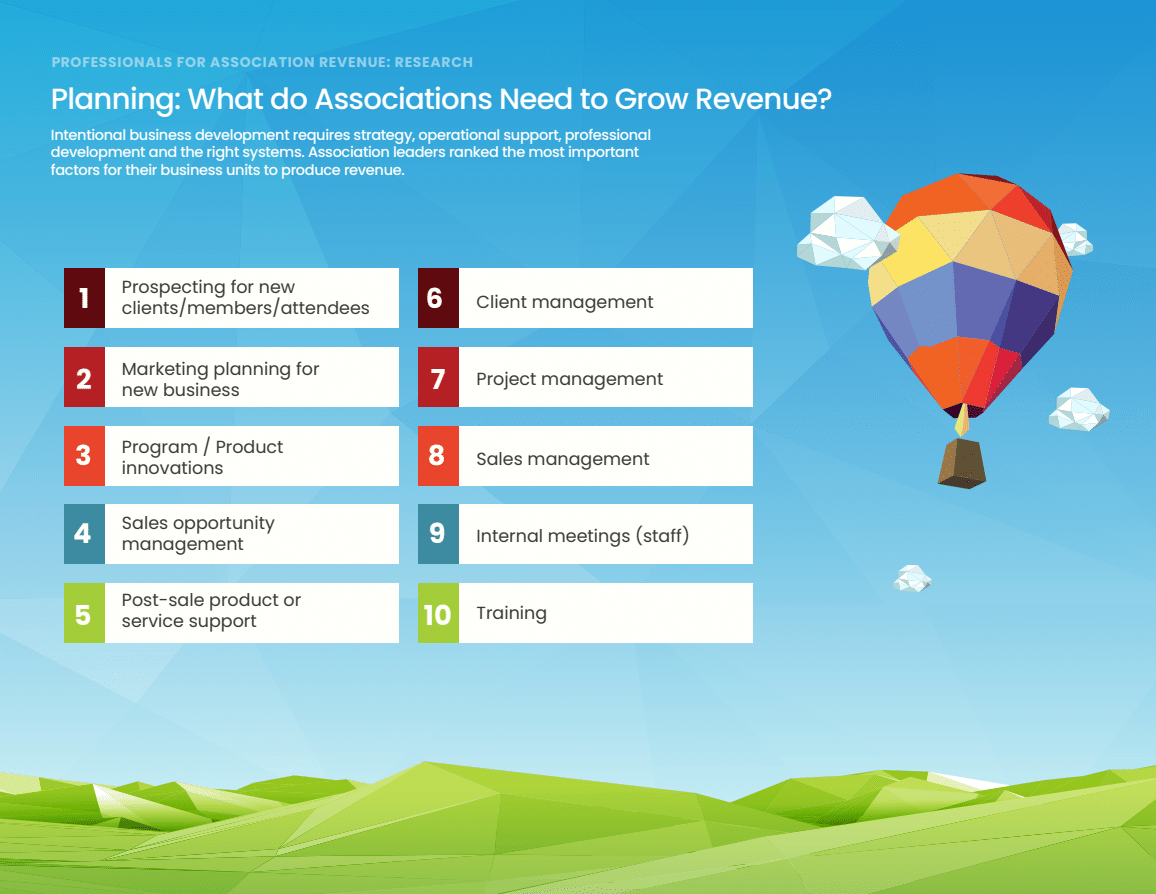5 Ways Your Sales Team Can Overcome the Biggest Prospecting Pitfall

60% of associations polled in a new PAR survey reported their sales teams need to allocate more time each week to prospecting for clients, members and event attendees.
This presents a significant challenge to understaffed and overstretched sales teams who also reported their revenue efforts are hindered by a lack of staffing and resources (33%) and dedicated sales time (19%).
The solution to overcoming these reported barriers to time, staffing and resources isn’t spending more time on prospecting but rather taking a more strategic and efficient approach.
Lewis Flax is the President of Flax Associates, a consultancy that helps associations and nonprofits maximize revenue, and says targeting and evaluating the right prospects is at the core of effective prospecting.
“What happens in the association world is when we don’t qualify, we don’t evaluate and we don’t assess who we are targeting and reaching out to we don’t succeed,” Flax says.
Flax says a common prospecting pitfall is treating all prospects in the same manner when instead qualifying each prospect's buying potential upfront will save time in the long run. Conducting meaningful outreach with the right companies will reduce unanswered emails, ignored phone calls, unsuccessful follow-ups and ultimately several hours wasted on a discouraging task.
“We want to target the right companies, we want to figure out who the right people are to connect with, and then we want to reach out to them with messaging that is appropriate and relevant.”
Here are 5 ways association sales teams can save time with more efficient and effective prospecting.
1. Connect with the decision makers. One of the biggest time wasters is connecting with a potential client who does not have financial decision-making authority.
“It's normally not that difficult to figure out who the key decision makers are as opposed to chasing after junior level staffers with a gold, silver or bronze prospectus,” Flax says.
Sales teams can use tools like LinkedIn and ZoomInfo to track down the right contacts in the market faster. Brittany Shoul is the Senior Vice President of Revenue Strategy & Operations at MCI USA and says there is another technology tool making prospecting easier for her team: artificial intelligence (AI).
“We've been exploring ChatGPT to support prospecting by putting in a few easy prompts like, ‘Give me the top 5 competitors to company (ABC) and explain what they do in the (X) vertical market.’ This is saving our team hours of prospecting time and research and giving us a few easy nuggets to weave into emails and voicemails to get their attention,” Shoul says.
2. Conduct meaningful outreach. Connecting with a potential client is an important first step in the sales process, but the communication that follows must be valuable to the prospect. Ryan Dohrn is a business strategy consultant and says sales professionals should connect with prospects on LinkedIn and engage in their online content before the initial meeting.
“Engaging with value is all about being relevant to the prospect in real-time. Don’t ask huge strategy questions, but instead ask, ‘What can I do to help you today?’ No one likes to have someone show up and drop 35 things on their desk and say, ‘Pick one!’ Great meetings are about providing value and recommendations to the client at every stage of the sale,” Dohrn says.
3. Cultivate before seeking commitment. Awareness, cultivation and commitment are three key stages in a prospect’s buying process. Flax says association sales teams are often adept at educating prospects about the association but fail to cultivate a relationship before seeking a financial commitment.
“The ironic part is for most associations that cultivation process is very easy. Think about the content that associations publish whether it's best practices or guidelines. To be able to take that relevant and appropriate content and send that it to their prospects is an easy step,” Flax says.
4. Incorporate sales management. Effective sales teams schedule frequent touchpoints between the sales professionals and team leaders. During this time sales managers can evaluate the targeted outreaches, examine data and review intended messaging.
“What is going to be communicated to the prospect and how will it be done in a way that will resonate? A gold, silver or bronze prospectus is not going to be of interest to a decision maker,” Flax says.
5. Lean into the data. Technology increasingly supports sales efforts and is a valuable asset when it comes to finding new prospects. Shoul says her team captures inbound leads by requiring a name and email address for access to all online sales materials. This ensures the sales team can capture the lead and follow-up in an appropriate manner.
Lead scoring further qualifies the lead by tracking and scoring a prospect’s engagement and number of clicks.
“Using that data helps the sales team work the right leads and prospects at the right time. It also provides insight into their interests, such as knowing they are opening the events related email but not the print advertising related email,” Shoul says.
Using these 5 steps can help associations determine whether they need to allocate more time for prospecting or use their time more effectively.
Q: Which of the following activities do you believe your business development team needs to spend more time on each week? (responses ranked below)
Download the PAR Association Business Development Landscape Report
- How association teams are growing revenue
- Anticipated gaps in business development practices
- Performance over membership, events and non-dues programs
- Projected growth and anticipated obstacles to revenue
